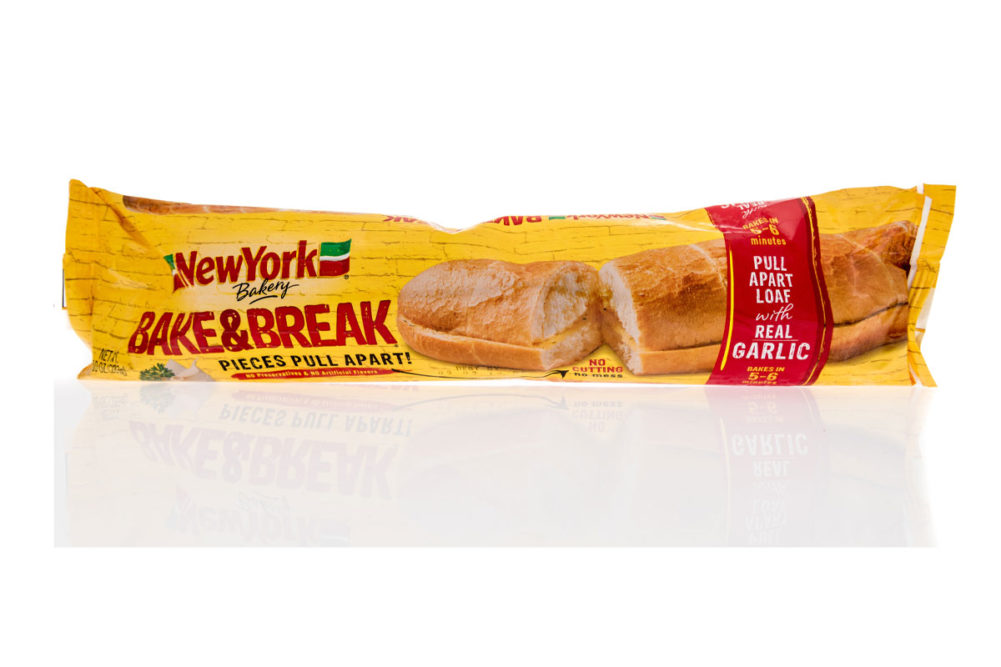WESTERVILLE, OHIO — David A. Ciesinski, president and chief executive officer of Lancaster Colony Corp., is looking forward to what he described as “the stabilization period” for the Westerville-based maker of frozen baked foods, sauces and dressings.
The company in the just-completed third quarter wrapped Wave 3 of its ERP implementation initiative, which included the addition of its largest dressing and sauce production facility in Horse Cave, Ky. And while Lancaster did incur some incremental cost as production and service were unfavorably affected by the ERP system cutover process, the team addressed the issues and is now ready for Wave 4, which will consist of bringing the last of the company’s dressing facilities and two of its dressing warehouses online.
But it’s what lies beyond Wave 4 that has Mr. Ciesinski excited.
“What we expect to do at that point in time is really to focus around a period that we’re calling stabilization, utilization and training,” he said during a May 4 conference call with analysts. “Whereafter really fundamentally changing the way people work in our factories and our warehouses just bedding down the system, cleaning up the remnants of broken glass that may still exist and focusing on helping our people in those plants get far more efficient and effective in how they’re doing this work.
“Now all of that also creates a window for us to talk about M&A. And that’s an item that we are very, very excited about. If you go back really to where we started the journey, this strategic journey you’re talking about. We really started out as more of a confederation of companies that had been acquired rather than an integrated company. SAP has enabled us to do that. So from an optionality perspective, it’s going to give us the ability to look at small businesses and integrate them into our network very tightly that should glean greater efficiencies, but it also gives us the ability to look at bigger scale acquisitions and do precisely that.
“It also allows us to follow some of our foodservice customers or others that want to grow internationally and do that far more effectively than we could have done it on our old platform.”
Mr. Ciesinski’s comments came against the backdrop of the release of strong financials.
Lancaster Colony in the third quarter ended March 31 posted income of $24.56 million, equal to 89¢ per share on the common stock, which compared with a loss of $4.48 million in the same period a year ago. Last year’s third quarter included a noncash restructuring and impairment charge of $22.7 million related to the exit of the Bantam Bagels business.
Net sales, meanwhile, increased 15%, climbing to $464.94 million from $403.49 million a year ago.
“The Retail segment reported Q3 net sales of $247 million, up 16% and driven by the favorable impact of pricing actions to offset inflation and strong volume growth of 6%,” Mr. Ciesinski said. “The volume growth measured in pounds shipped was driven by the continued success of our licensing program and double-digit growth for our New York Bakery frozen garlic bread products.
“In licensing, Buffalo Wild Wings sauces, Arby’s sauces, Chick-fil-A sauces and Olive Garden dressings all contributed to volume growth. IRI data for our fiscal third quarter showed sales gains from marquee retail brands and notable share gains for our category-leading New York Bakery and Sister Schubert’s brands. New York Bakery’s leading share of the frozen garlic bread category grew 350 basis points to 43.5%. In Sister Schubert’s, leading share of the frozen dinner roll category increased 150 basis points to 53.1%.
“In our Foodservice segment, net sales grew over 14% to $218 million, driven by pricing actions, volume gains for several national account customers and higher demand for our branded Foodservice products. In total, Foodservice segment volume increased less than 1%.”
In the nine months ended March 31, Lancaster Colony’s net income was $102.12 million, or $3.71 per share, up 69% from $60.54 million, or $2.20 per share. Net sales were $1.37 billion, up 12% from $1.22 billion.




